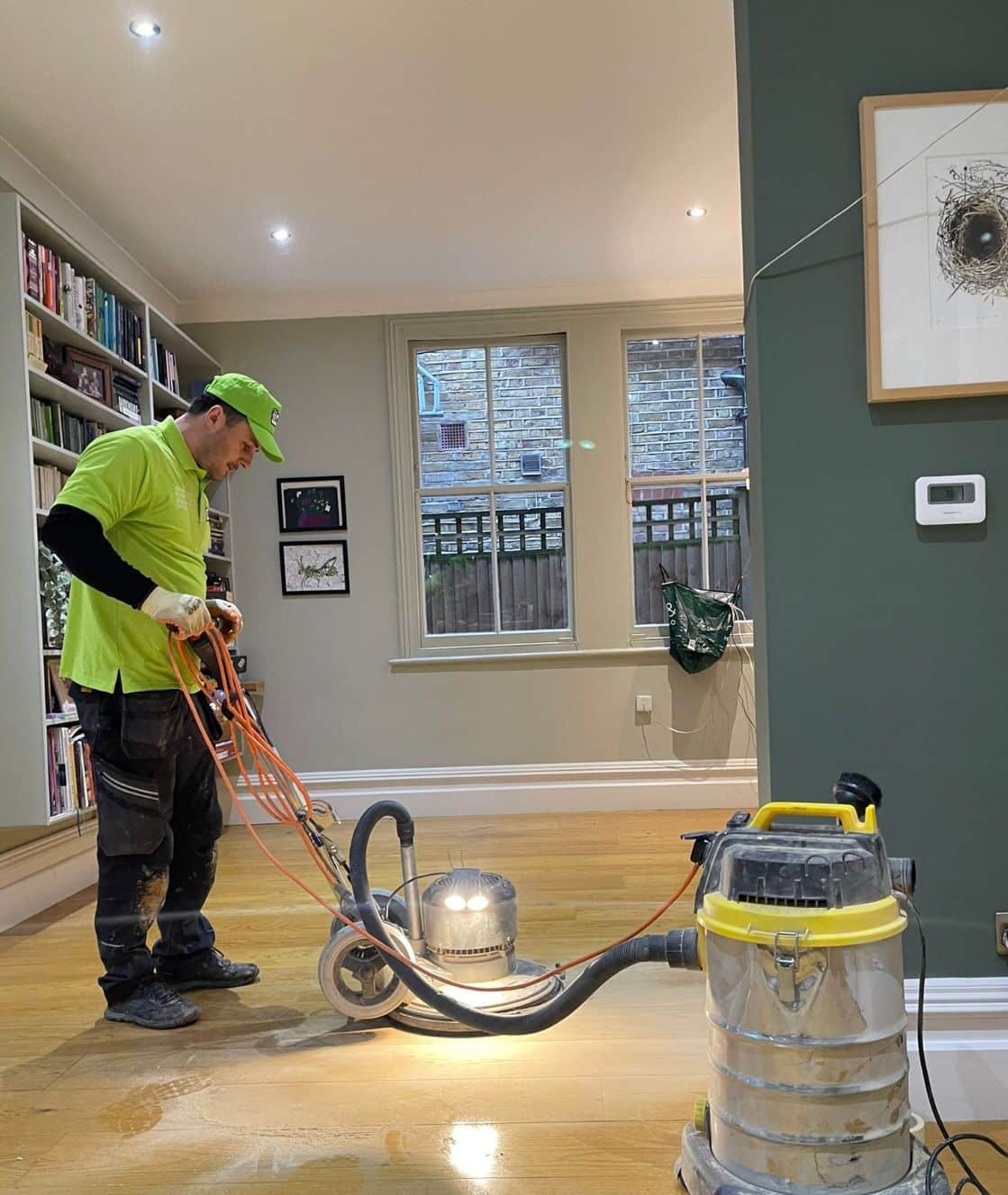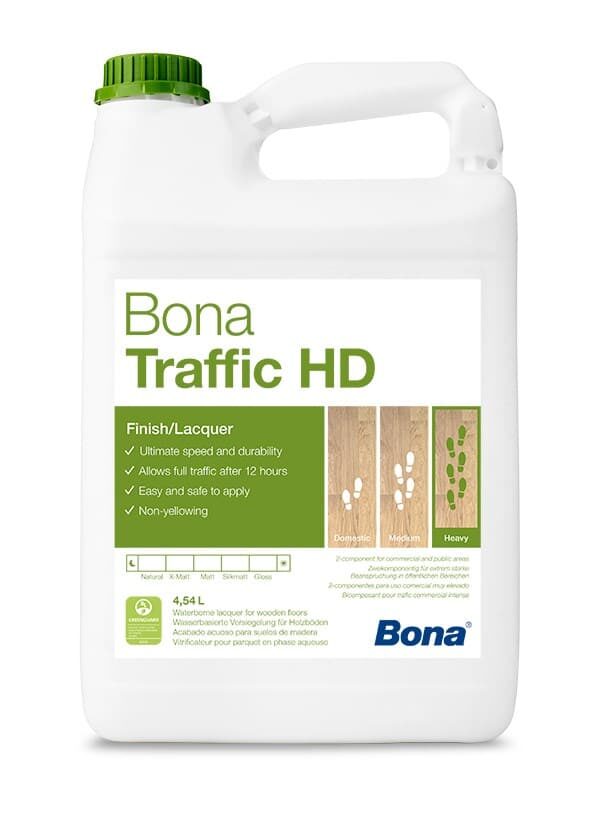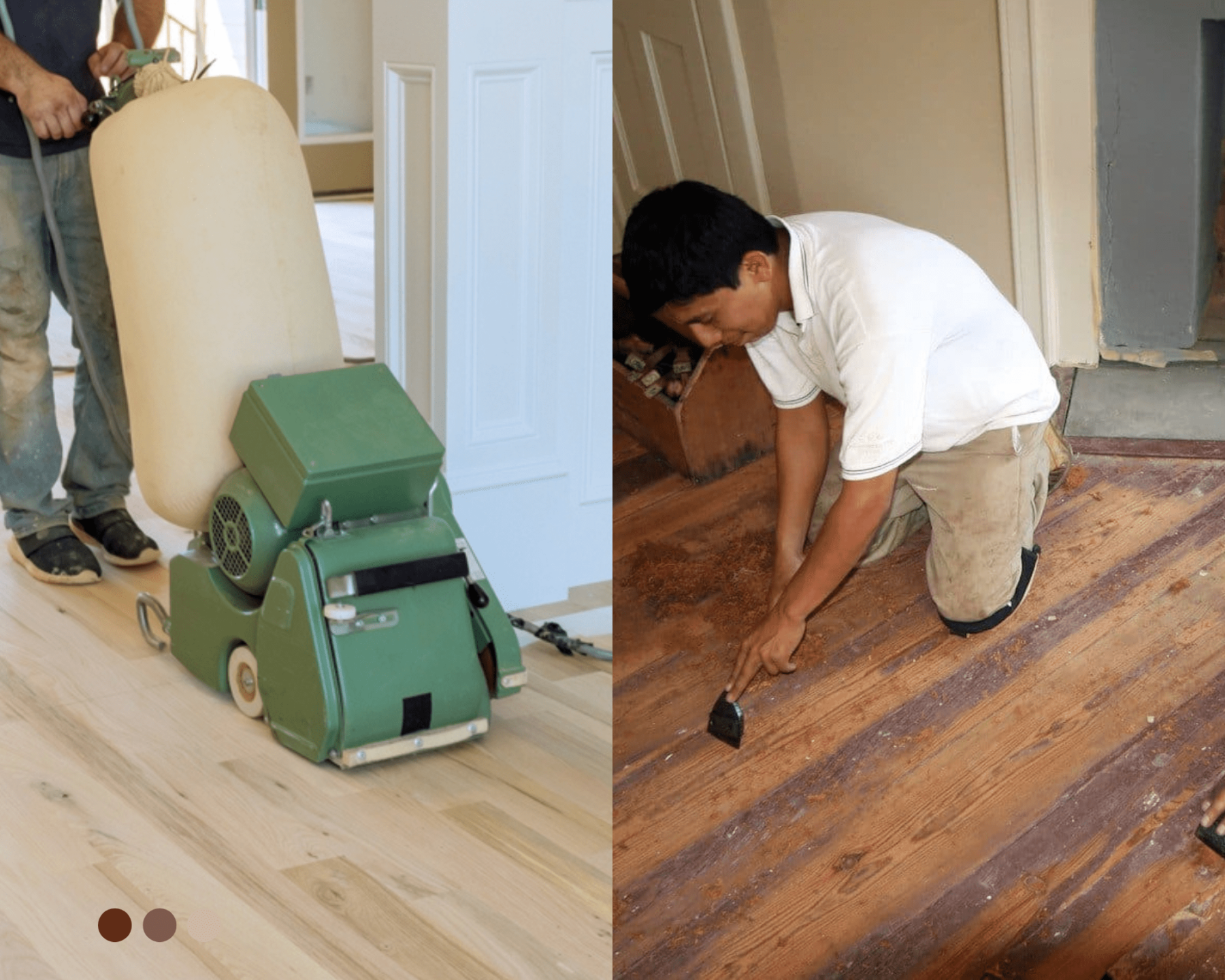London:
Nationwide:
Understanding and Preventing Cupping in Hardwood Floors
Posted on June 20, 2023
Floor Sanding Services News
Dealing with Cupping in Hardwood Floors: A Comprehensive Maintenance Guide
Hardwood floors are a beloved feature in many homes, prized for their natural beauty and durability. However, like any natural material, wood is subject to changes due to environmental factors, with cupping being one of the most common issues. Understanding what causes cupping and how to prevent it can help you maintain the beauty and longevity of your hardwood floors.What is Cupping on Hardwood Floors?
Cupping is a type of wood floor deformity where the edges of a plank rise higher than its centre, giving the board a concave or “cupped” appearance. It is primarily caused by changes in moisture levels within the wood and can occur on both solid and engineered hardwood floors.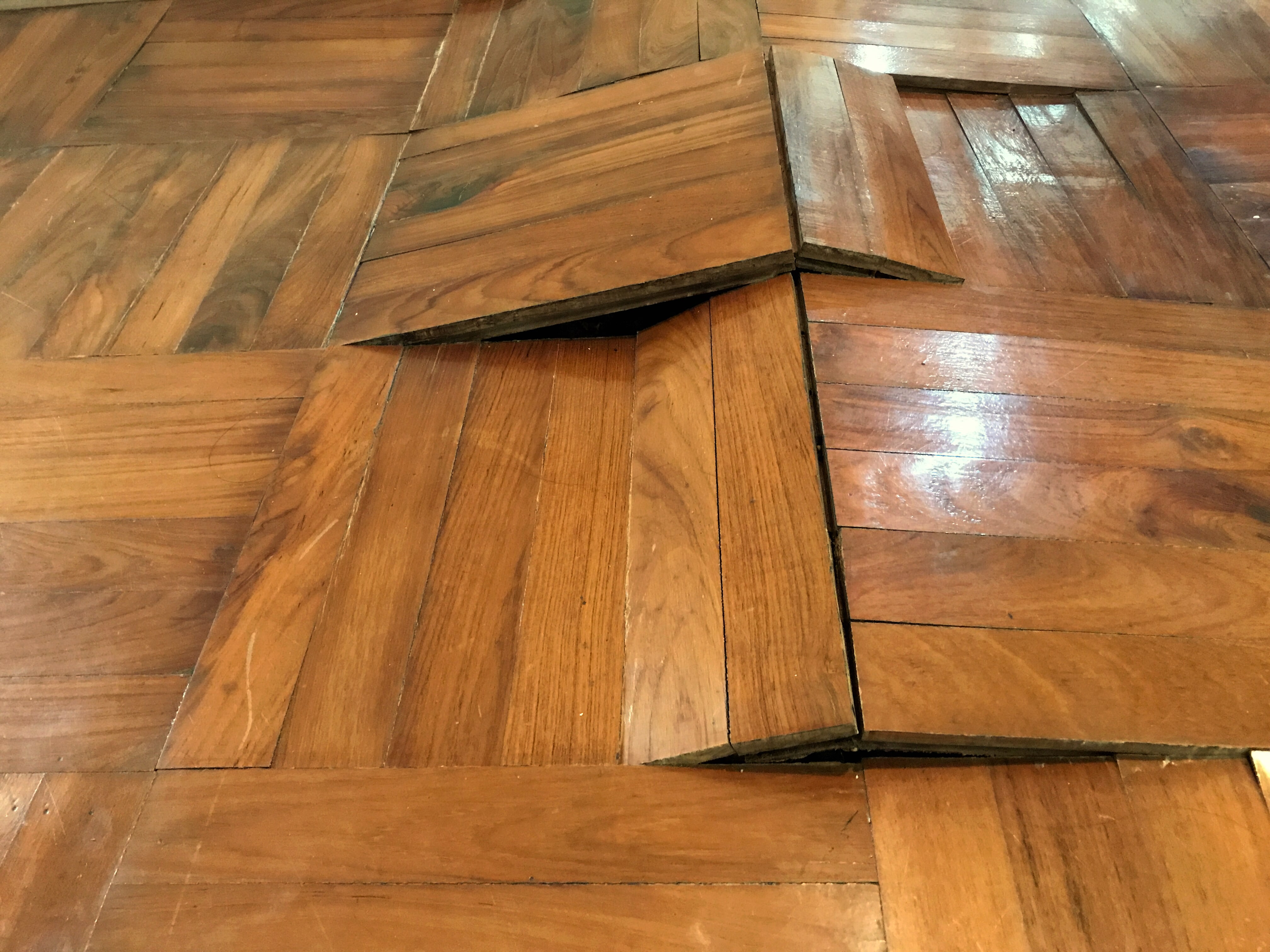
Understanding the Causes of Cupping
Moisture Imbalance
The primary cause of cupping is a moisture imbalance within the wood. Hardwood absorbs and releases moisture in response to the surrounding environment. If one side of a plank absorbs or loses moisture at a different rate than the other, it can cause the plank to warp or cup.Inadequate Acclimation
Before installation, hardwood flooring needs to acclimatise to the environment in which it will be installed. If the wood hasn’t had adequate time to adjust to the room’s humidity and temperature levels, it can lead to cupping post-installation.Poor Subfloor Conditions
If the subfloor is excessively damp or not properly prepared before installation, it can lead to a moisture imbalance in the wood, causing cupping.How to Prevent Hardwood Floor Cupping
Proper Acclimation
Before installation, store the hardwood in the room where it will be installed for a few days. This allows the wood to adjust to the humidity and temperature levels of the room and helps prevent post-installation cupping.Controlling Humidity Levels
Maintaining consistent indoor humidity levels can help prevent cupping. This can be achieved by using dehumidifiers or humidifiers as needed, depending on the season.Proper Installation
Proper installation is crucial to preventing cupping. Ensure the subfloor is clean, dry, and flat before installation. Always follow the manufacturer’s installation instructions.Regular Maintenance
Regular cleaning and maintenance can help prevent cupping. Avoid using excessive water when cleaning, and promptly clean up any spills.How to Fix Cupped Hardwood Floors
In many cases, once the moisture issue is resolved, cupped floors will gradually flatten out on their own as the wood dries. However, if the cupping is severe or if the floor doesn’t return to its normal state, you may need to take further action.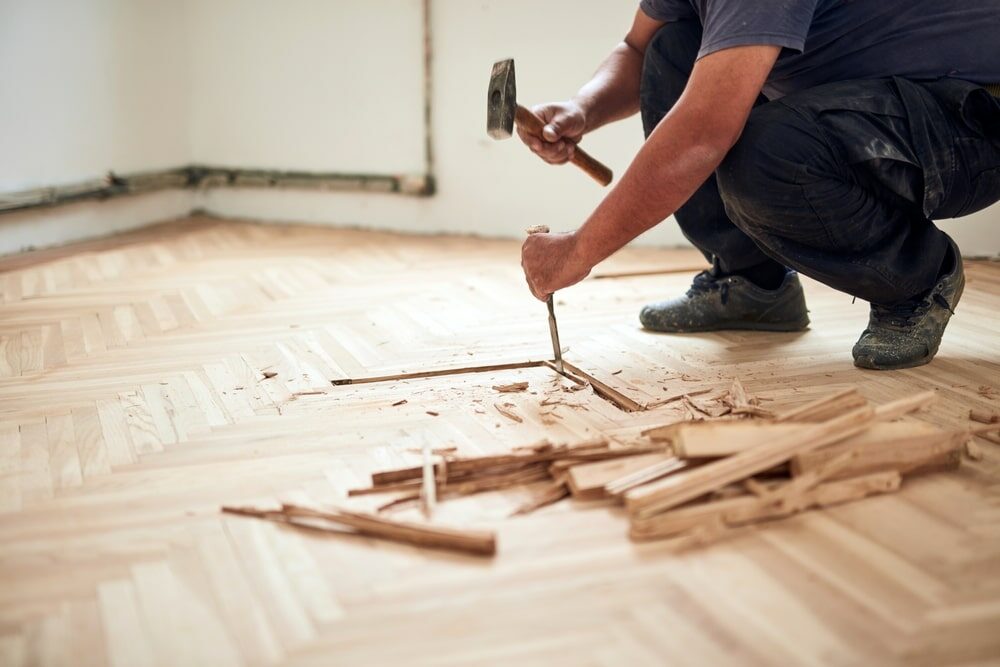
Address the Source of moisture.
The first step in repairing cupped floors is to address the moisture issue that caused the cupping. This may involve fixing leaks, improving ventilation, or adjusting indoor humidity levels.Sand and Refinish
If the floor doesn’t flatten out on its own after addressing the moisture issue, you may need to sand and refinish it. This process involves removing the cupped area by sanding the floor flat and then applying a new finish. It’s a task that requires skill and patience, and in many cases, it may be best to hire a professional.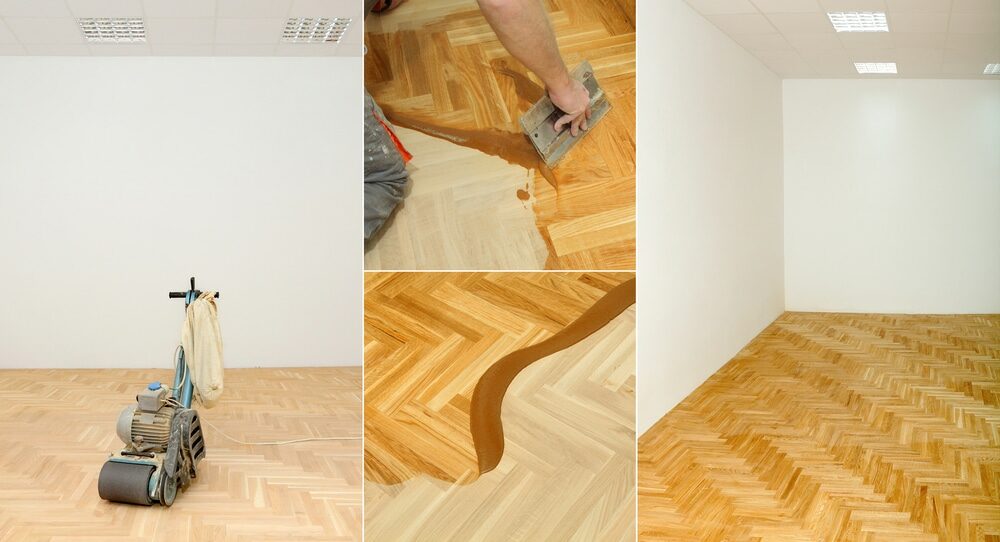
Conclusion
Hardwood floor cupping can be a distressing issue, but with a clear understanding of its causes and how to prevent it, you can keep your floors in great shape. Regular maintenance, careful attention to indoor humidity, and proper installation are key. And remember, while minor cupping may resolve on its own, don’t hesitate to seek professional help for severe or persistent issues. With the right care, your hardwood floors can provide beauty and warmth for many years to come.Some Useful Links:
- Floor Sanding Services
- School Floor Sanding
- Wood Floor Restorations
- Wood Floor Repairs
- Wood Floor Polishing
More from our Blog:
Hardwood Floor Installation: Nailing and Stapling Solving Hardwood Floor Problems: A Guide to Deciding Between Replacement and Salvage Avoiding Pitfalls in Hardwood Floor Maintenance – Essential Tips for Homeowners DIY Wood Floor Installation – A Comprehensive Beginner’s Guide A DIY Guide to Refinishing Hardwood Floors
Sanding
We provide virtually dust-free sanding with our continuous belt machinery with mobile extraction units, giving you a safer environment for your family.
Oiling
This organic finish not only adds beauty to your home but also has exceptional water-repellent characteristics, making it easier to clean and maintain.
Waxing
This natural floor finish offers the softest and most mellow appearance – and leaves your floor able to breath.
Buffing
Using soft buffing machines (and hand-polishing where required) will bring a wonderful sheen to your newly-finished floor.
Repairs
We offer a full assessment of your wooden floors to determine what repairs are needed to provide the perfect working surface for the later stages of sanding, staining and sealing.
Restoration
We offer a comprehensive restoration process designed to address floors that are improperly fitted or damaged over time through wear and tear.
Request a fixed price quote for your wood floor restoration now
Simply enter your postcode below to get started.
Services
Wood Floor Sanding Wood Floor Restoration Wood Floor Scratch Repair Squeaky Wood Floor Repair Parquet Floor Sanding Parquet Floor Restoration Commercial Floor Sanding Church Floor Sanding Community Centre Floor Sanding School Floor Sanding Gap Filling Gap Filling with ResinCopyright © Mr Sander®
Privacy & Cookies Terms & Conditions Complaints Procedure Cancellation Rights Sitemap